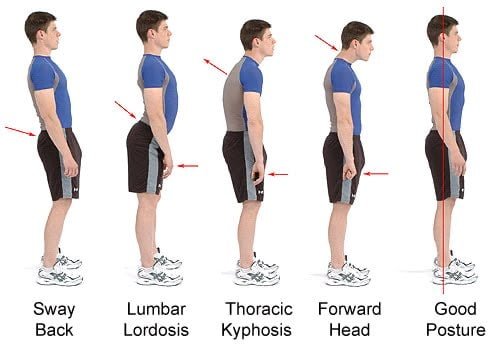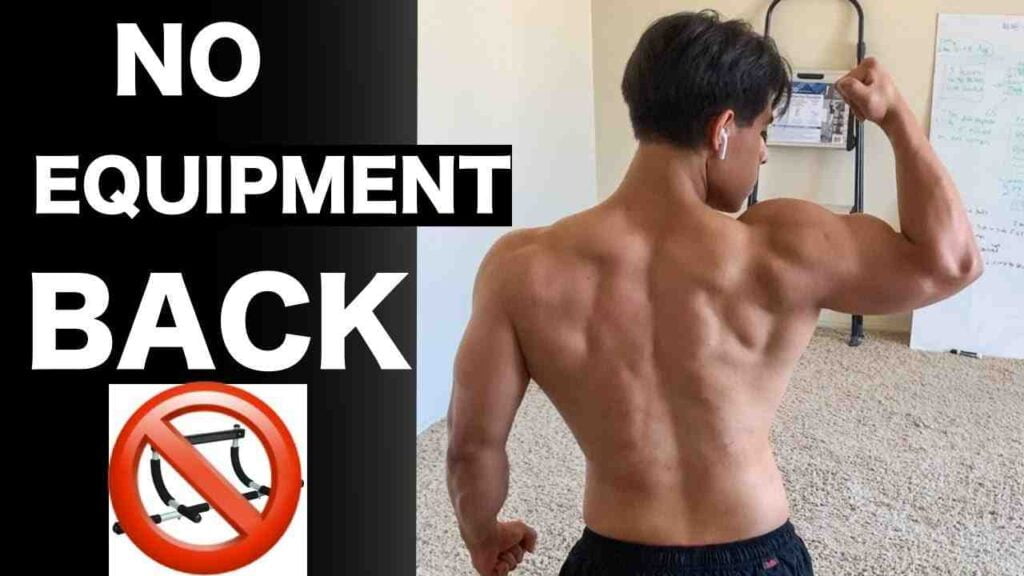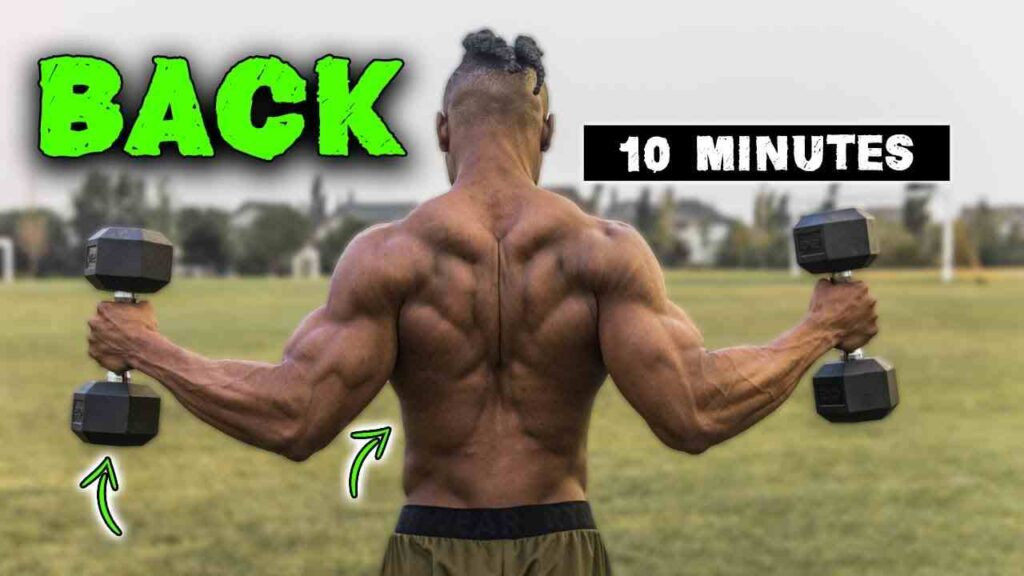CrossFit is a high-intensity fitness regimen that incorporates elements from various sports and types of exercise. One of the key components to excelling in CrossFit is developing a strong, resilient back. Not only does it form the foundation for powerful lifts and dynamic movements, but it also plays a pivotal role in protecting against injury and maintaining overall athletic performance.
In this article, we’ll delve into the essentials of back training within the realm of CrossFit. From understanding the anatomy of the back and the importance of proper form, to exploring the most effective exercises and programming strategies, we’ll cover everything you need to know to strengthen your back and enhance your CrossFit training. Whether you’re a seasoned athlete or just starting out, these insights will help you build a back that’s not just strong, but also functional and well-balanced.
Anatomy of the Back
The human back is a complex network of muscles that plays a pivotal role in maintaining posture, supporting the spine, and facilitating a wide range of movements. In the realm of CrossFit, where functional fitness is paramount, understanding the anatomy of the back is crucial for crafting effective workouts.
SHOP FOR THE ADJUSTABLE DUMBBELLS ON AMAZON
The major muscles in the back can be divided into two groups: extrinsic and intrinsic. The extrinsic muscles are superficial and mainly involved in the movements of the upper limb and the scapula. The intrinsic muscles are deep and mainly involved in the movements of the spine.
The Extrinsic Muscles Include

- Trapezius: A large triangular muscle that attaches to the occipital bone, the spinous processes of the cervical and thoracic vertebrae, the acromion, the spine of the scapula, and the lateral third of the clavicle. It has three parts: upper, middle, and lower. The trapezius elevates, retracts, depresses, and rotates the scapula, and extends the head and neck.
- Latissimus dorsi: A broad, flat muscle that covers most of the lower back. It attaches to the spinous processes of the lower six thoracic vertebrae, the thoracolumbar fascia, the iliac crest, the lower three or four ribs, and the inferior angle of the scapula. It inserts into the floor of the intertubercular groove of the humerus. The latissimus dorsi extends, adducts, and medially rotates the arm.
- Levator scapulae: A thin, strap-like muscle that runs from the transverse processes of the upper four cervical vertebrae to the medial border of the scapula, superior to the spine. The levator scapulae elevates and downwardly rotates the scapula, and bends the neck to the same side.
- Rhomboid major and minor: Two rectangular muscles that lie deep to the trapezius. They attach to the spinous processes of the upper thoracic vertebrae and the medial border of the scapula, below the spine. The rhomboids retract and downwardly rotate the scapula, and fix it to the thoracic wall.
- Serratus posterior superior and inferior: Two thin, quadrangular muscles that lie deep to the rhomboids. The serratus posterior superior attaches to the spinous processes of the lower cervical and upper thoracic vertebrae, and the upper border of the second to fifth ribs. The serratus posterior inferior attaches to the spinous processes of the lower thoracic and upper lumbar vertebrae, and the lower border of the ninth to twelfth ribs. The serratus posterior muscles assist in respiration by elevating and depressing the ribs, respectively.
The Intrinsic Muscles Include
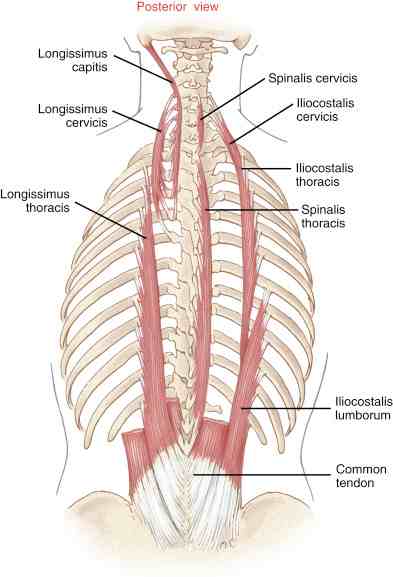
- Splenius capitis and cervicis: Two broad, strap-like muscles that form the superficial layer of the intrinsic muscles. They attach to the spinous processes of the lower cervical and upper thoracic vertebrae, and the mastoid process of the temporal bone and the transverse processes of the upper cervical vertebrae, respectively. The splenius muscles extend and laterally flex the head and neck, and rotate them to the same side.
- Erector spinae: A large group of muscles that form the intermediate layer of the intrinsic muscles. They consist of three columns: iliocostalis, longissimus, and spinalis. Each column has three parts: cervical, thoracic, and lumbar. The erector spinae muscles attach to various bony landmarks along the spine, the ribs, the skull, and the pelvis. The erector spinae muscles extend and laterally flex the vertebral column, and maintain the normal curvature of the spine.
- Transversospinal: A group of muscles that form the deep layer of the intrinsic muscles. They consist of three subgroups: semispinalis, multifidus, and rotatores. Each subgroup has different attachments and lengths, but they all run from the transverse processes of one vertebra to the spinous process of another, crossing several segments. The transversospinal muscles extend and stabilize the spine, and rotate it to the opposite side.
- Interspinales and intertransversarii: Two groups of muscles that form the deepest layer of the intrinsic muscles. They are small muscles that lie between the spinous processes and the transverse processes of adjacent vertebrae, respectively. The interspinales and intertransversarii muscles assist in the extension and lateral flexion of the spine.
SHOP FOR THE WEIGHTLIFTING BELT ON AMAZON
Understanding the engagement and function of these muscles is fundamental for creating a well-rounded CrossFit back workout routine. By targeting each of these muscle groups, you not only enhance strength but also promote balanced development and reduce the risk of imbalances or injuries.
Benefits of CrossFit Back Workouts
CrossFit back workouts are exercises that target the muscles of the back, such as the lats, traps, rhomboids, and erectors. They can help you improve your performance in various CrossFit movements, as well as your overall health and fitness. Here are some of the benefits of CrossFit back workouts:
- They can help you control and execute gymnastic movements such as muscle ups, pull ups, and toes to bar. A strong back allows you to stabilize your body and pull yourself up with ease.
- They can help you improve the pulling phases of the Olympic lifts, such as the snatch and the clean. A powerful back enables you to generate more force and speed from the ground to the overhead position.
- They can help you stabilize all overhead pressing and balancing movements, such as the jerk, the handstand push up, and the overhead squat. A solid back supports your shoulders and spine and prevents injuries.
- They can help you support your spine and protect you from injury. A healthy back is essential for maintaining good posture and avoiding lower back pain, which is a common problem among CrossFitters.
- They can help you maintain good posture. A well-developed back can improve your appearance and confidence, as well as your breathing and digestion. A good posture also reduces stress and fatigue.
- They can help you lift more (and thus get stronger) on the most important basic strength exercises, such as the deadlift, the squat, and the bench press. A strong back is the foundation of any strength program, as it transfers force and stabilizes the core.
- They can help you work with your core to control and stabilize movements. A strong back and a strong core are interdependent and synergistic. They work together to create a powerful and efficient movement system.
SHOP FOR THE PULL-UP BAR ON AMAZON
Incorporating CrossFit back workouts into your fitness routine not only contributes to a sculpted and strong back but also enhances your overall well-being, functional strength, and athletic performance.
Essential CrossFit Back Exercises
When it comes to CrossFit, a strong and resilient back is a game-changer. Whether you’re aiming to enhance your overall fitness or seeking to improve performance in other sports, incorporating these essential CrossFit back exercises into your routine can make a significant impact. Some essential CrossFit back exercises are:
Wide grip pull-up
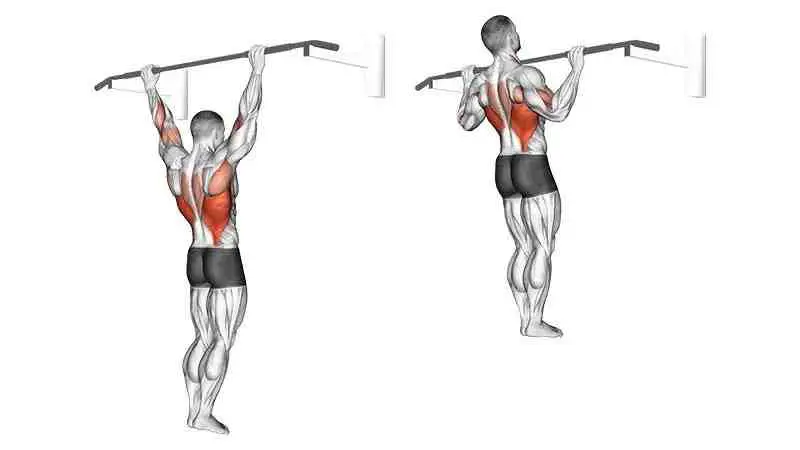
- This exercise works your lats, traps, and biceps, and improves your grip strength. It also helps you with muscle ups, pull ups, and other gymnastic movements.
- To perform a wide grip pull-up, you need to hang from a pull-up bar with your hands wider than shoulder-width apart, and pull yourself up until your chin is above the bar. Then lower yourself down with control. You can use a band or a partner to assist you if needed.
- Sets & Reps: Typically, 3-4 sets of 6-10 reps are recommended.
- Tips: Engage your lats fully and avoid swinging. Focus on pulling with your elbows to fully activate the back muscles.
Prone row
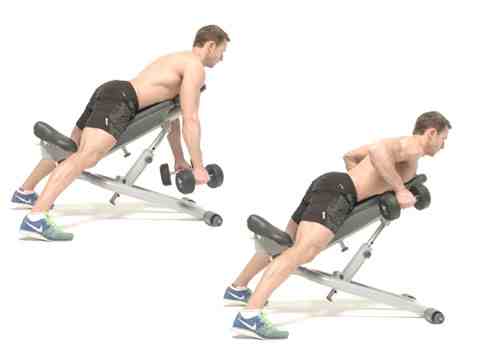
- This exercise targets your upper back, especially your rhomboids and rear deltoids. It also strengthens your core and stabilizes your scapula.
- To perform a prone row, you need to lie face down on a bench with a pair of dumbbells in your hands. Then row the dumbbells up to your sides, squeezing your shoulder blades together. Then lower the dumbbells back to the starting position.
- Sets & Reps: Aim for 4 sets of 8-12 reps.
- Tips: Keep your spine aligned and pull the weight towards your waist to target the mid-back muscles effectively.
Dual kettlebell rack carry
- This exercise challenges your lower and upper back, as well as your core and grip. It also improves your posture and endurance.
- To perform a dual kettlebell rack carry, you need to hold two kettlebells in the rack position, with your elbows tucked in and your wrists straight. Then walk for a certain distance or time, keeping your chest up and your shoulders back.
- Sets & Reps: 3 sets for a timed duration (e.g., 30 seconds to 1 minute) or a set distance.
- Tips: Keep your chest up and core tight to maintain posture throughout the carry.
Barbell row
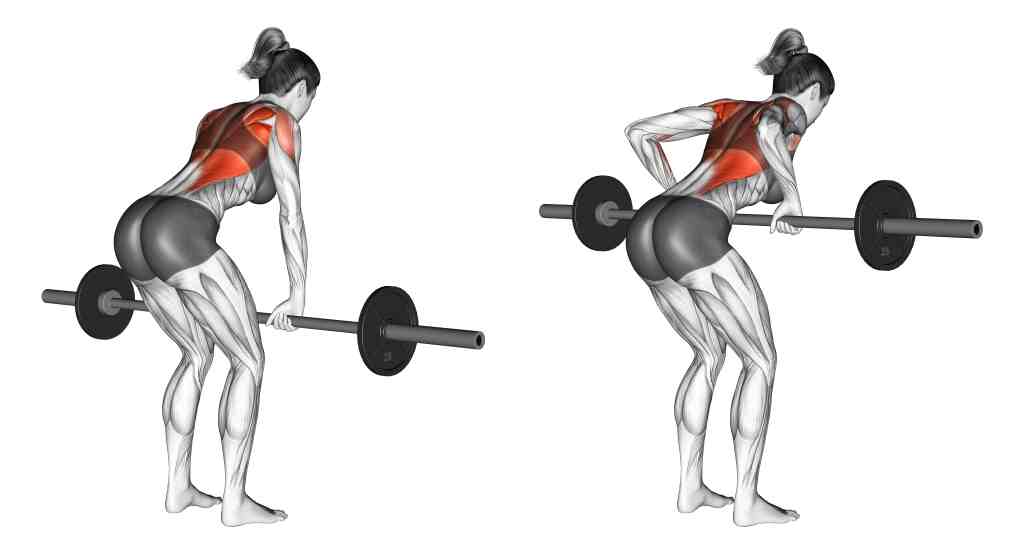
- This exercise works your entire back, especially your lats and traps. It also engages your biceps, forearms, and core.
- To perform a barbell row, you need to hold a barbell with an overhand grip, slightly wider than shoulder-width apart. Then hinge at your hips and bend your knees slightly, keeping your back flat and your core tight. Then pull the barbell up to your lower chest, keeping your elbows close to your body. Then lower the barbell back to the starting position.
- Sets & Reps: 4 sets of 8-12 reps work well.
- Tips: Maintain a slight bend in the knees and hinge at the hips to protect your lower back.
Dumbbell row
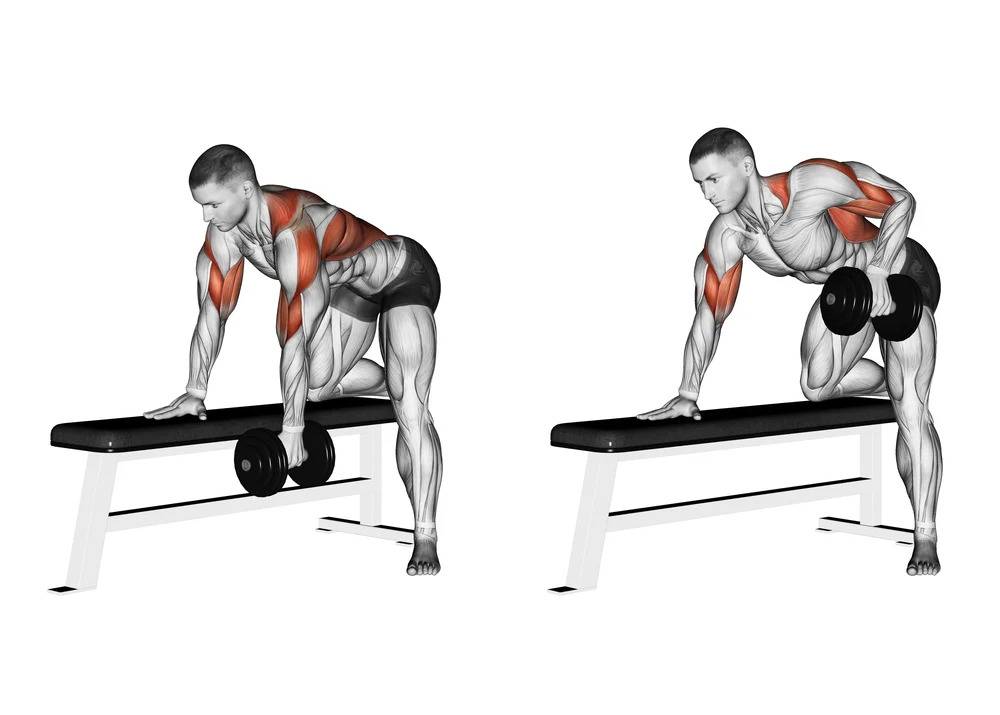
- This exercise isolates one side of your back at a time, and works your lats, traps, and rear deltoids. It also activates your biceps, forearms, and core.
- To perform a dumbbell row, you need to hold a dumbbell in one hand and place your other hand and knee on a bench. Then row the dumbbell up to your side, keeping your elbow close to your body and your back straight. Then lower the dumbbell back to the starting position. Repeat on the other side.
- Sets & Reps: Perform 3-4 sets of 10-15 reps per arm.
- Tips: Use a bench for support and avoid rotating your torso as you row the dumbbell.
Kettlebell swing
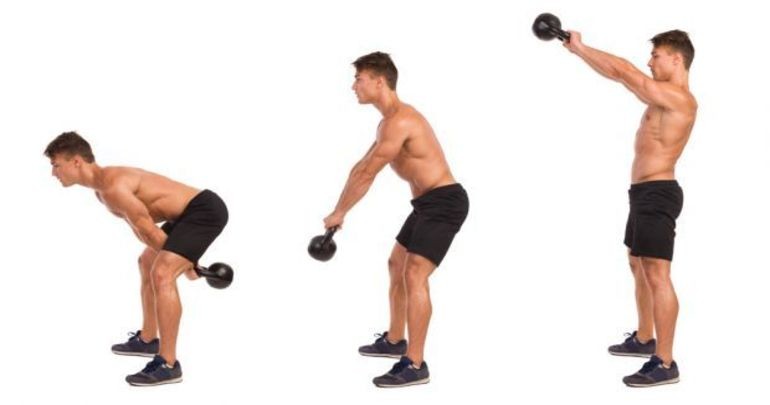
- This exercise works your lower back, glutes, hamstrings, and core. It also boosts your power, endurance, and cardiovascular fitness.
- To perform a kettlebell swing, you need to hold a kettlebell with both hands and stand with your feet shoulder-width apart. Then hinge at your hips and swing the kettlebell between your legs. Then explosively thrust your hips forward and swing the kettlebell up to eye level. Then let the kettlebell swing back down and repeat.
- Sets & Reps: 3-5 sets of 15-20 reps are effective.
- Tips: It’s a hip-hinge movement, so power through your hips and glutes, keeping your arms relaxed.
Ring row
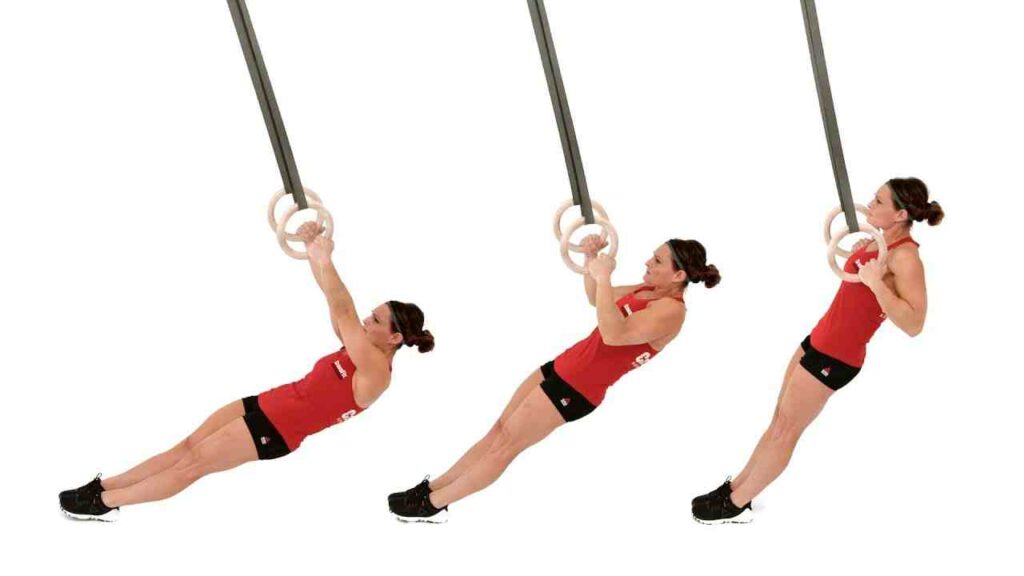
- This exercise works your upper back, especially your lats and rhomboids. It also improves your grip and core stability.
- To perform a ring row, you need to hang from a pair of rings with your feet on the ground and your body in a straight line. Then pull yourself up to the rings, keeping your elbows close to your body and your chest out. Then lower yourself back to the starting position.
- Sets & Reps: 3-4 sets of 8-12 reps are standard.
- Tips: Adjust the difficulty by changing your body angle; the closer to horizontal you are, the harder it will be.
SHOP FOR THE RESISTANCE BAND ON AMAZON
Incorporate these CrossFit back exercises into your routine, ensuring proper form and gradually increasing intensity to build a strong, functional back. Remember to customize your workout based on your fitness level and goals.
Common Mistakes to Avoid
Training the back for CrossFit can be incredibly rewarding, but it’s also an area where athletes can make mistakes that hinder progress and increase the risk of injury. Here are some common mistakes and tips on how to avoid them:
1. Sacrificing Form for Heavier Weights: It’s tempting to lift heavier weights to feel like you’re making progress, but this can lead to poor form and potential injuries. How to Avoid: Focus on mastering the technique with lighter weights before gradually increasing the load.
2. Neglecting the Lower Back: While the upper back gets a lot of attention, the lower back is just as important for stability and power. How to Avoid: Incorporate exercises like deadlifts and good mornings to strengthen the lower back muscles.
3. Inadequate Warm-Up: Skipping a proper warm-up can lead to stiff muscles and a higher chance of injury during intense workouts. How to Avoid: Perform dynamic stretches and light cardio to prepare your muscles for the workout.
4. Overtraining: Pushing too hard without adequate rest can lead to overuse injuries. How to Avoid: Listen to your body, ensure proper recovery time, and consider active rest days.
5. Imbalanced Training: Focusing too much on one type of movement or muscle group can create imbalances. How to Avoid: Ensure a balanced workout routine that targets all back muscles and movement patterns.
6. Ignoring Mobility Work: Mobility is crucial for performing exercises correctly and preventing injuries. How to Avoid: Include mobility drills and stretches in your routine to maintain a full range of motion.
7. Not Scaling Appropriately: Trying to perform exercises beyond your current ability can be dangerous. How to Avoid: Scale down the exercises to match your fitness level and gradually progress as you become stronger.
SHOP FOR THE CROSSFIT SHOES ON AMAZON
By being mindful of these common pitfalls and implementing the suggested strategies, you can train your back effectively and safely, ensuring long-term success in your CrossFit journey.
FAQs
Q 1. Can I do CrossFit back workouts at home?
Ans. Absolutely! Many CrossFit back exercises can be adapted for home workouts. Invest in basic equipment like kettlebells and resistance bands to enhance your home workout experience.
Q 2. How often should I train my back with CrossFit exercises?
Ans. The frequency of your CrossFit back workouts depends on your fitness level and goals. As a general guideline, 2-3 sessions per week can be effective for most individuals. Listen to your body and allow for adequate rest between sessions.
Q 3. Are CrossFit back workouts suitable for beginners?
Ans. Yes, but it’s crucial to start with lighter weights and focus on perfecting your form. Begin with basic movements like bodyweight exercises and gradually progress to more advanced exercises as your strength improves.
Q 4. What should I eat to support my back muscle development?
Ans. A well-balanced diet rich in protein, healthy fats, and carbohydrates is essential for muscle development. Ensure you’re getting enough nutrients to fuel your workouts and aid in recovery. Consider consulting with a nutritionist for personalized advice.
Q 5. Can CrossFit back workouts help alleviate existing back pain?
Ans. In many cases, yes. However, it’s essential to consult with a healthcare professional before starting any new exercise routine, especially if you have pre-existing back pain. CrossFit back workouts, when done with proper form, can strengthen the muscles that support the spine, potentially reducing discomfort over time.
Q 6. What are some signs of overtraining the back?
Ans. Signs of overtraining may include persistent soreness, fatigue, decreased performance, and an increased risk of injury. Ensure you’re allowing adequate recovery time between workouts, getting enough sleep, and paying attention to your body’s signals.
Q 7. How do I prevent lower back strain during CrossFit back exercises?
Ans. Focus on maintaining a neutral spine during exercises, engage your core muscles, and start with lighter weights to perfect your form. Gradually increase the intensity as your strength improves. If you experience persistent pain, consult with a fitness professional to assess your form.
Q 8. Can women benefit from CrossFit back workouts in the same way as men?
Ans. Absolutely! CrossFit back workouts are beneficial for both men and women. Women, like men, can develop strength, improve posture, and enhance overall fitness through a well-designed CrossFit back workout routine.
Conclusion
In conclusion, training the back is a critical component of a well-rounded CrossFit program. A strong back not only enhances performance across a wide range of activities but also plays a pivotal role in injury prevention. By incorporating a variety of exercises that target the different muscle groups of the back, athletes can ensure balanced development and improved functional strength.
Remember, proper form and technique are paramount to reaping the full benefits of back training while minimizing the risk of injury. Consistency, recovery, and attention to mobility will complement your efforts, leading to a stronger, more resilient back. Whether you’re a beginner or an advanced CrossFit enthusiast, focusing on back strength will undoubtedly contribute to your overall fitness and success in the sport.

Good day, and welcome to Fitthour. My name is Shubham Vijay, and I am a certified personal trainer and nutrition coach with 6 years of experience in the fitness industry. At Fitthour, we specialize in types of training, such as strength training, cardio, or HIIT, and our mission is to help clients achieve their fitness goals and improve their overall health.

